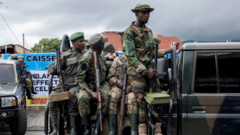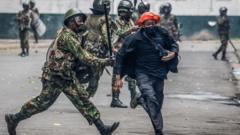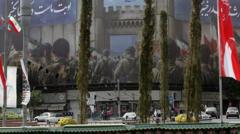Recent arson and gun attacks on multiple French prisons are suspected to be the work of drug gangs retaliating against a governmental crackdown. Although authorities are exploring various leads, including foreign involvement, the prevailing theory suggests that escalating tensions with narcotics cartels are behind the violent outburst.
Chaos in French Prisons: Are Drug Gangs Responding to Crackdowns?

Chaos in French Prisons: Are Drug Gangs Responding to Crackdowns?
A spate of attacks on French prisons raises concerns about the resurgence of violent drug gangs amidst intensified government crackdowns on trafficking.
In a wave of violence since Sunday night, French prisons have faced a series of alarming attacks, characterized by arson and gunfire, raising questions about the perpetrators’ identity. Officially, authorities are keeping all investigative avenues open, considering possibilities ranging from extremist left factions to foreign interference, but suspicions are increasingly directed toward organized drug gangs.
Interior Minister Bruno Retailleau voiced this belief, confidently attributing the unrest to "drugs-yobs" in the wake of new legislation aimed at dismantling drug trafficking operations. "It's us declaring war on them," he stated, underscoring the government's commitment to targeting drug profits.
Over three nights, attackers executed coordinated assaults including setting cars ablaze outside prisons and a training center for prison officers. Disturbingly, efforts to claim responsibility emerged through graffiti tagged with the initials DDPF—an acronym for “Droits des Prisonniers Français” or “Rights for French Prison Inmates.” This previously unknown group released a video on Telegram, showcasing the burning of a prison officer's vehicle. The video claimed to seek respect for prisoners’ rights and even included spelling errors in its French text, raising doubts about the group's authenticity.
While it would be unconventional for drug gangs to frame their actions within a human rights narrative, the involvement of such groups seems more plausible than the assumption of traditional extremist factions. Investigators noted that the attire of those implicated reflected typical drug gang characteristics rather than those of far-left militancy.
The French government’s assertions regarding the attacks gaining traction stem from historic instances of drug-related violence. The Interior and Justice Ministries, currently unified in their approach against drug trafficking, are rapidly progressing through parliamentary channels to introduce legislation that would bolster the state’s capacity to counter drug lords. The proposed measures include establishing a specialized wing within the prosecutors’ office and instituting stricter guidelines for prison visits to curb communication with gang leaders.
Significantly, two prisons slated for conversion will exclusively house the country's most notorious drug traffickers under tighter rules, aiming to limit their operational capacity. The challenge of contraband—especially mobile phones—has become a serious operational concern for prisons, evidenced by the case of Mohamed Amra, a drug lord whose escape highlighted systemic vulnerabilities.
Amra’s recent recapture in Romania serves as a reminder of the dangers posed by drug trafficking networks. With the government perceiving the prison assaults as an indication that drug gangs feel threatened, officials are banking on public sentiment to showcase their tough stance against crime. The true motives of the assailants may soon come to light as investigations advance, potentially clarifying the nature and extent of the threat posed by these gangs.



















